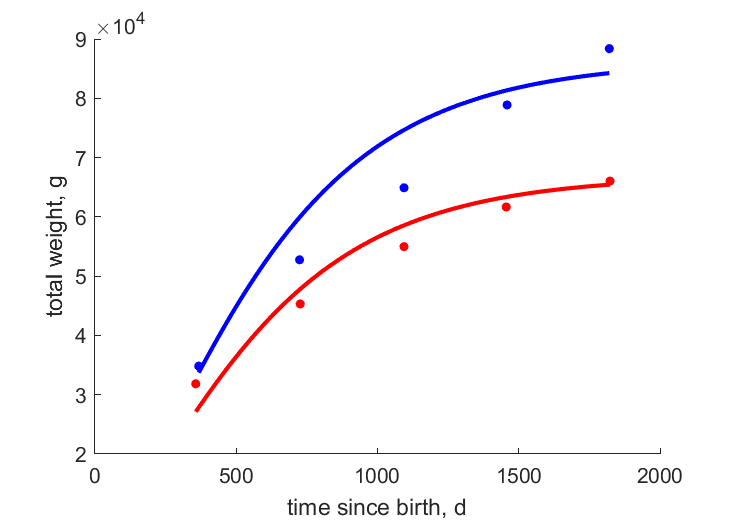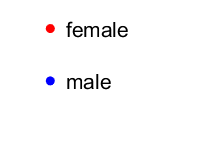Predictions & Data for this entry
| Model: stx | climate: Dsc, Dfc | migrate: | phylum: |
| COMPLETE = 2.5 | ecozone: THn | food: bxM, xiHl | class: |
| MRE = 0.054 | habitat: 0iTd, 0iTht | gender: Dg | order: |
| SMSE = 0.006 | embryo: Tv | reprod: O | family: |
Zero-variate data
| Data | Observed | Predicted | (RE) | Unit | Description | Reference |
|---|---|---|---|---|---|---|
| tg | 184 | 184.9 | (0.005139) | d | gestation time | AnAge |
| tx | 122 | 121.6 | (0.00332) | d | time since birth at weaning | AnAge |
| tp | 912 | 908.9 | (0.003363) | d | time since birth at puberty | AnAge |
| am | 7592 | 7914 | (0.04236) | d | life span | AnAge |
| Wwb | 3200 | 3171 | (0.009203) | g | wet weight at birth | AnAge |
| Wwi | 7.3e+04 | 6.691e+04 | (0.08342) | g | ultimate wet weight females | CoteFest2001 |
| Wwim | 1.05e+05 | 8.641e+04 | (0.177) | g | ultimate wet weight males | CoteFest2001 |
| Ri | 0.003288 | 0.003281 | (0.001888) | #/d | maximum reprod rate | AnAge |
Uni- and bivariate data
| Data | Figure | Independent variable | Dependent variable | (RE) | Reference |
|---|---|---|---|---|---|
| tW_f |   | time since birth | total weight | (0.05049) | CoteFest2001 |
| tW_m |   | time since birth | total weight | (0.07698) | CoteFest2001 |
Pseudo-data at Tref = 20°C
| Data | Generalised animal | Oreamnos americanus | Unit | Description |
|---|---|---|---|---|
| v | 0.02 | 0.249 | cm/d | energy conductance |
| kap | 0.8 | 0.9034 | - | allocation fraction to soma |
| kap_R | 0.95 | 0.95 | - | reproduction efficiency |
| p_M | 18 | 14.31 | J/d.cm^3 | vol-spec som maint |
| k_J | 0.002 | 0.0005241 | 1/d | maturity maint rate coefficient |
| kap_G | 0.8 | 0.7957 | - | growth efficiency |
| k | 0.3 | 0.2889 | - | maintenance ratio |
Discussion
- Slow foetal development is assumed
- Males are assumend to differ from females by {p_Am} only
- Body temperature is guessed based on Rupicapra
- mod_1: males have equal state variables at b, compared to females
Bibliography